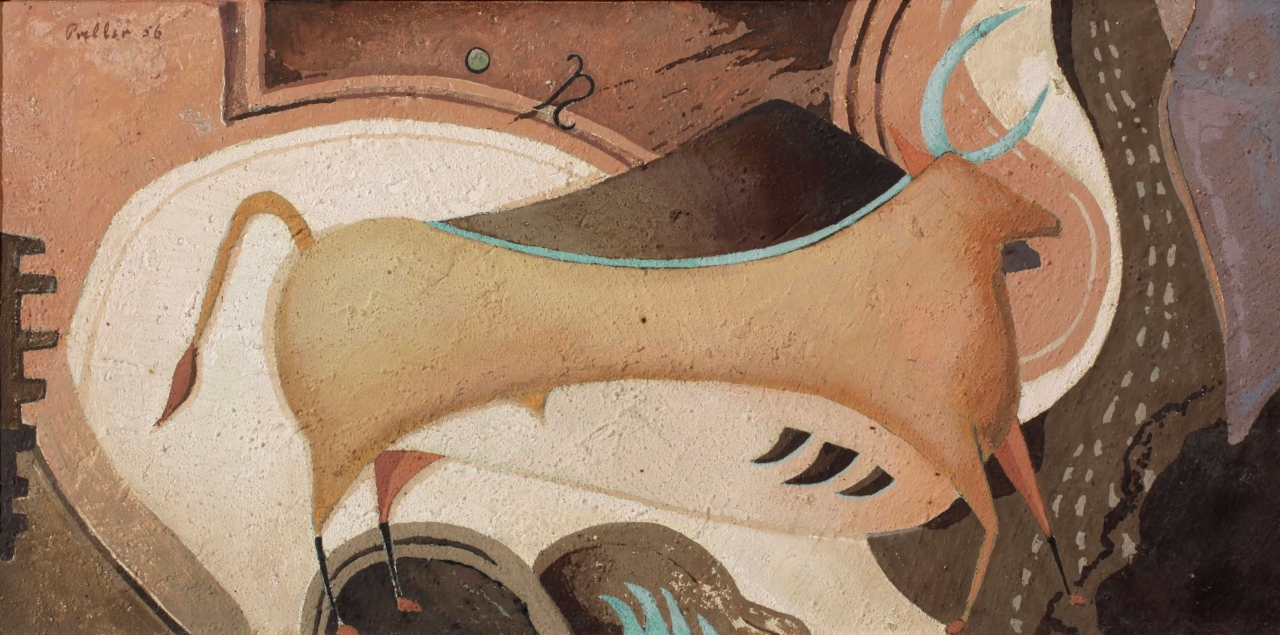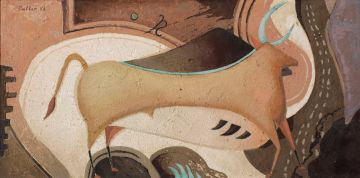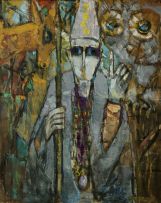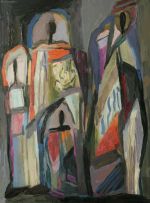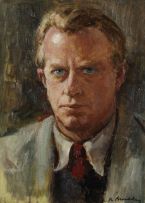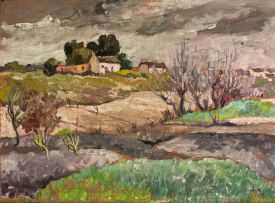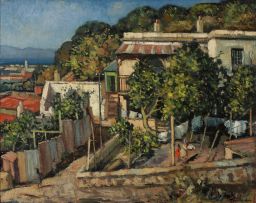The Bull
Alexis Preller
About this Item
signed and dated '56
Notes
Three years before painting this work, Alexis Preller had undertaken a study trip to Italy and Egypt. The influence of the Quattrocento frescoes of Piero della Francesca and the symbolism of ancient Egypt are noticeable in his subsequent work. The Bull precedes a number of paintings produced in the late fifties and early sixties in which bulls are associated with the rituals and mythologies of African and European beliefs and practices. These had fascinated the young Preller, who as early as 1941, while a prisoner of war 'up North', wrote a letter describing his excitement at touring various tombs including that of the Sacred Bulls. ¹
The bull-deity in Egyptian mythology, known as Apis, was a fertility god connected with grains and herds and closely associated with the pharaoh, because it symbolised the king's courageous heart, great strength, virility and fighting spirit. Preller's simplification of the bull and inclusion of turquoise in the horn and delineation of its hump, clearly draw on the hieratic qualities of Egyptian tomb frescoes. On a ground prepared to resemble the textured quality of mural art, he has employed the muted subtle tones of burnt umber and sienna that are reminiscent of Italian frescoes and of the rock art in the Southern European caves like Altamira.
¹Esmé Berman and Karel Nel, Alexis Preller: Africa, the Sun and Shadows, Shelf Publishing, 2009, p62
Provenance
Helen de Leeuw
